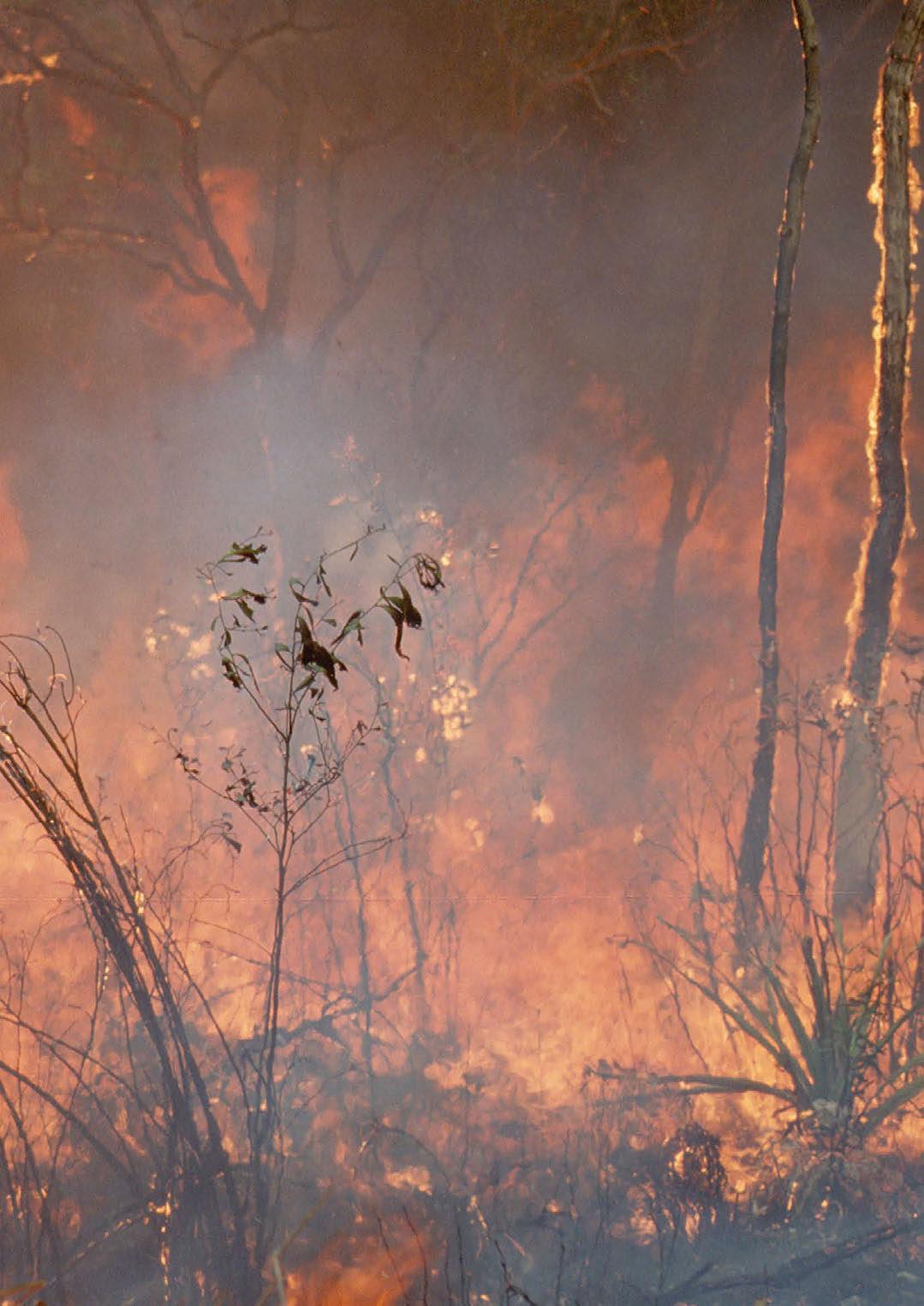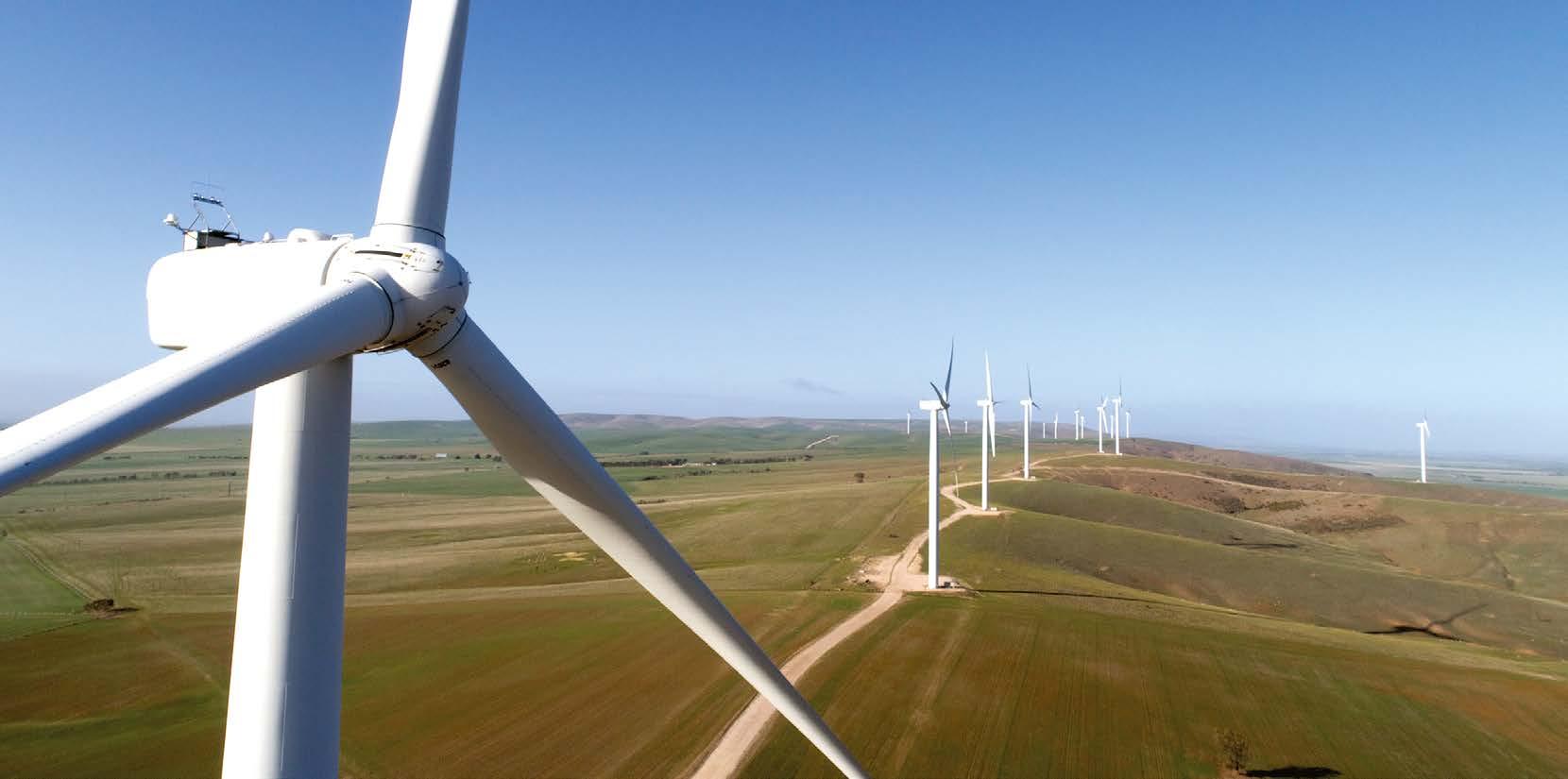
7 minute read
The Climate Council’s extreme weather report
THE MOST RECENT Climate Council report was released on the ten-year anniversary of Black Saturday and while bushfires in Tasmania were engulfing 1000-year-old forests.
Advertisement
The widespread destruction and intensity of suffering caused by extreme weather events cannot be overstated, and these events are becoming increasingly common.
The Climate Council report listed the key findings as follows: • Nine of the 10 hottest years on record in Australia have occurred since 2005 • Climate change is increasing the frequency and/or severity of extreme weather • Globally, economic losses associated with weather-related disasters in 2018 are estimated to be US$215 billion • Insurance companies in Australia paid out more than $1.2 billion in claims following major extreme weather events during 2018 • The current drought in eastern Australia is forecast to cut the country’s
GDP growth in 2018-19 by up to 0.75% or $12.5 billion, and • Ocean temperatures in 2018 were the warmest on record, surpassing the previous record set in 2017.
Temperatures nudging 50°C, bushfires ravaging rainforests and people at increased risk of cardiac arrests because of heatwaves – this is the new normal for Australia and it’s being driven by climate change.
Cameras outside the International Space Station captured a stark and sobering view of Hurricane Florence the morning of 12 September 2018 as it churned across the Atlantic in a west-northwesterly direction with winds of 130 miles an hour. Image courtesy of NASA
Australia is one of the most vulnerable developed countries in the world to the impacts of climate change and as extreme weather events become more frequent and/or more severe, so do their impacts. “ ”
The Climate Council’s latest report, Weather Gone Wild has found climate change is increasing the frequency and/or severity of extreme weather and that Australians are suffering as a result.
Climate change is influencing all extreme weather events as they are occurring in a more energetic climate system. Australia is one of the most vulnerable developed countries in the world to the impacts of climate change. Heatwaves are becoming longer and hotter, and starting earlier in the year.
In the south of the country, where many Australians live and work, dangerous bushfire weather is increasing and cool season rainfall is dropping off, stretching firefighting resources, putting lives at risk and presenting challenges for the agriculture industry and other sectors, such as tourism.
Climate change and extreme temperatures
Higher global average temperatures have increased the probability of hot extremes (including record-breaking hot temperatures) and decreased the probability of cold extremes. In Australia, the ratio of observed hot to cold temperature records was 12 to 1 between 2000 and 2014.
The annual number of hot days (above 35°C) and very hot days (above 40°C) has also increased strongly over most areas since 1950. Heatwaves are also lasting longer, reaching higher maximum temperatures and occurring more frequently over many regions of Australia.
Climate change and intense rainfall
Extremes of intense precipitation (rain, snow or hail) over various time periods are increasing across most of the world, despite regional variability. Long-term observations suggest there has been a net increase in the number of heavy precipitation events globally since 1951, with the most consistent trends found in central North America and Europe. In Australia, there has also been an increasing trend over recent decades in the proportion of total annual rainfall stemming from heavy rainfall days.
The physical relationship between temperature and the moisture-holding capacity of the atmosphere suggests that for each 1°C rise in global average temperature, the atmosphere can hold approximately 7 per cent more moisture.
In Australia, the magnitude of extreme daily rainfall (mm/day) is increasing in line with this rate, whilst the magnitude of extreme hourly rainfall (mm/ hour) is increasing at double this rate, and more than triple this rate in the tropical north.
Climate change and cyclones, storms, and hurricanes
There is substantial evidence that climate change is influencing the large-scale environment in which tropical cyclones form and develop.
The increasing ocean temperature affects the intensity of cyclones (along with changes in upper atmosphere conditions), both in terms of maximum wind speeds and in the intensity of rainfall that occurs in association with the


Sorghum crop, Quirindi, NSW, dead as a result of drought, November 2018 All extreme weather events are now being influenced by climate change as they are occurring in an atmosphere that contains significantly more heat and water vapour than 50 years ago.”
cyclone. Storms draw energy from the surface waters of the ocean, and as more heat is stored in these upper waters, cyclones have a larger source of energy on which to draw.
Climate change and droughts
In Australia, it is clear that climate change has influenced rainfall in the southeast and southwest corners of the continent.
Precipitation patterns have changed markedly in these regions, with a pronounced drying trend during the cool season (April – October), which is also the growing season. In the southeast of Australia, rainfall has declined by around 11 per cent since the late 1990s.
In the southwest of Australia, May to July rainfall has decreased by around 20 per cent since 1970.
Climate change and bushfires
The major factors influencing bushfires are sufficient fuel, a source of ignition and conducive weather conditions.
National and regional climate snapshot, 2018
Climate change is influencing all of these variables. In Australia, bushfire weather is measured using the Forest Fire Danger Index, which estimates fire danger on a given day based on observations of temperature, rainfall, humidity and wind speed.
The FFDI shows that extreme fire weather (the most extreme 10 per cent of fire weather days) has increased over recent decades over large areas of Australia, particularly across southern and eastern Australia.
The duration of the bushfire season has also lengthened over many areas of Australia.

Climate change is contributing to these changes, including through the increase in average temperature. Hot weather dries out fuel and increases its flammability, raising the rate of spread and intensity of bushfires.
Time for action
The extreme weather events outlined in the report provide [just] a snapshot of major events. Overall, natural disasters, excluding geological events (e.g. volcanoes and earthquakes), resulted in total economic losses of an estimated US $215 billion, with US $89 billion recorded as insured losses.
The extreme weather events of 2018 provide the latest evidence of a longterm trend of worsening extreme weather.
In Australia, the frequency and intensity of many extreme weather events – heatwaves, bushfires, floods, and storms – have increased over the past several decades, mirroring many of the trends that have been observed globally.
The evidence is clear that climate change is influencing the global trend of worsening extreme weather.
All extreme weather events are now being influenced by climate change as they are occurring in an atmosphere that contains significantly more heat and water vapour than 50 years ago.
Of 131 studies investigating whether climate change is influencing extreme weather published in the Bulletin of the American Meteorological Society between 2011 and 2016, 65 per cent found that the probability of the event occurring was increased due to climate change caused by humans. In some cases, the probability increased by a large margin.
The final chapter: A call for action
Climate change will increasingly influence extreme weather. In Australia, extreme rainfall events are projected to become more intense and frequent, and hotter days are expected; harsher fire weather is expected in the south and east; and time in drought is projected to increase across southern Australia with a greater frequency of severe drought (CSIRO and BoM 2015).
The magnitude of these trends depends on the future rate of greenhouse gas pollution here and around the world.
To slow and eventually stop the increasing trend of more frequent and severe extreme weather, global greenhouse gas emissions must be rapidly and deeply reduced to achieve net-zero emissions over the next two to three decades.
Australia must do its fair share in this global effort by adopting a credible climate policy that tackles greenhouse gas pollution across all sectors of the Australian economy. Fortunately, the benefits of doing so are many and the solutions are at our disposal.
‘Weather Gone Wild: Climate Change-Fuelled Extreme Weather In 2018’ was authored by Annika Dean, Martin Rice and Will Steffen.
The full report can be found at www.climatecouncil.org.au











